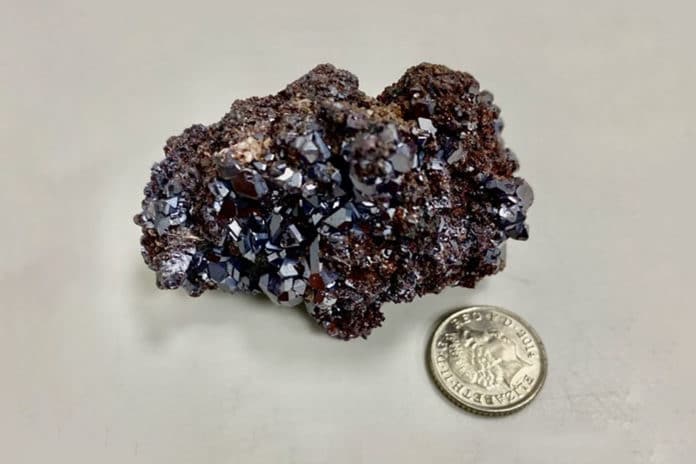Scientists at the University of St Andrews have developed a special form of light using an ancient Namibian gemstone. Using a naturally mined cuprous oxide (Cu2O) gemstone from Namibia, scientists created Rydberg polaritons, the largest hybrid particles of light and matter ever created.
According to scientists, this special form of light could be the key to new light-based quantum computers.
Rydberg polaritons are constantly switching from light to matter and back. Light and matter are like two sides of a coin in Rydberg’s polaritons. The matter side polaritons to interact. This interaction is essential as it allows the creation of quantum simulators.
Project lead Dr. Hamid Ohadi of the School of Physics and Astronomy at the University of St Andrews says that “making a quantum simulator with light is the holy grail of science. We have taken a huge leap towards this by creating Rydberg polaritons, the key ingredient.”
To make Rydberg polaritons, scientists trapped light between two extremely reflecting mirrors. A cuprous oxide crystal- obtained from the gemstone- was thinned and polished to a 30-micrometer thick slab. They then sandwiched it between the two mirrors to produce Rydberg polaritons 100 times larger than previously demonstrated.
One of the leading authors Dr. Sai Kiran Rajendran of the School of Physics and Astronomy at the University of St Andrews, says that “purchasing the stone on eBay was easy. The challenge was to make Rydberg polaritons that exist in an extremely narrow color range.”
Scientists are now working to refine these methods to explore the possibility of making quantum circuits.
Journal Reference:
- Konstantinos Orfanakis et al., Rydberg exciton-polaritons in a Cu2O microcavity, Nature Materials (2022). DOI: 10.1038/s41563-022-01230-4
